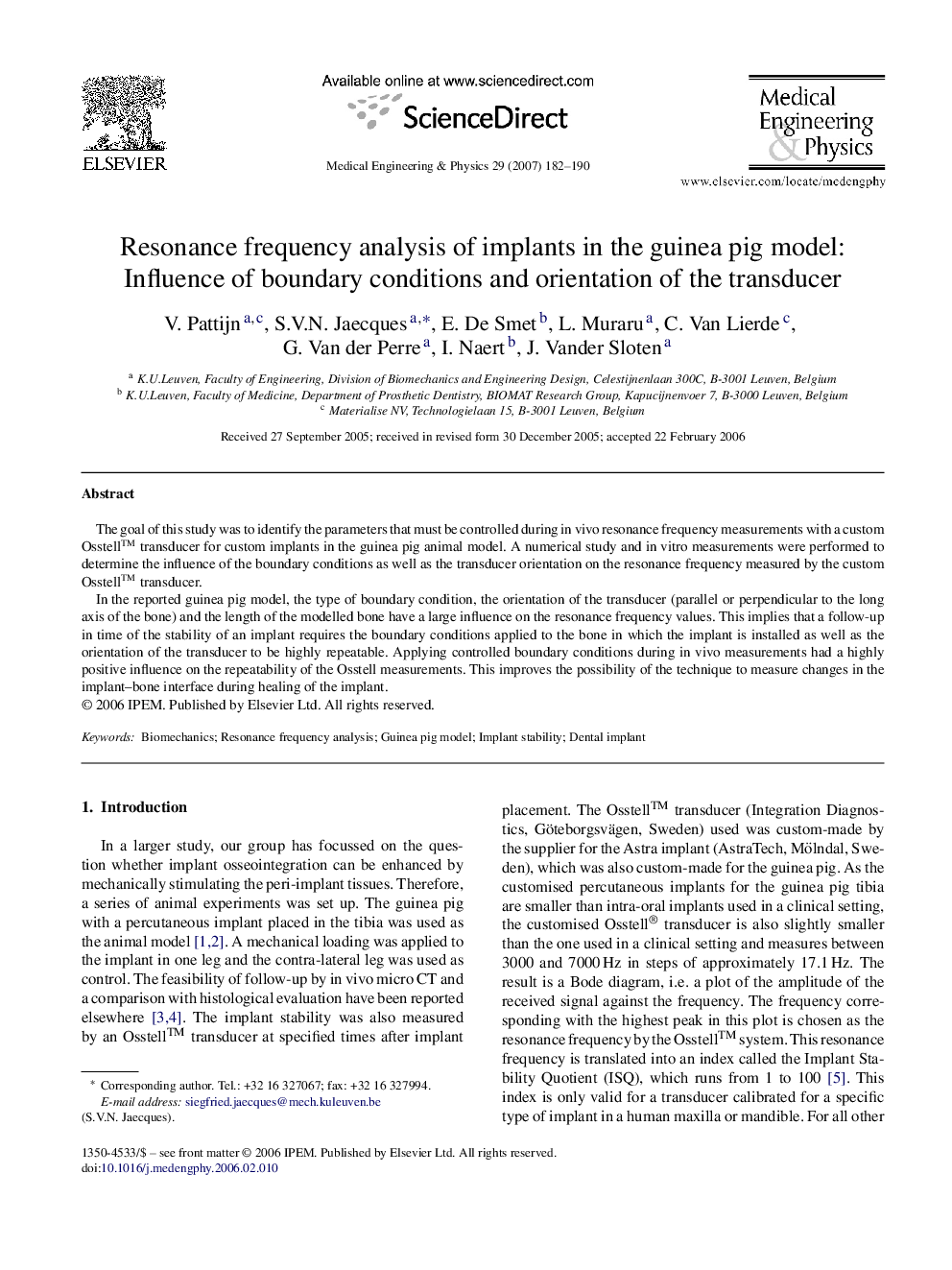| Article ID | Journal | Published Year | Pages | File Type |
|---|---|---|---|---|
| 877291 | Medical Engineering & Physics | 2007 | 9 Pages |
The goal of this study was to identify the parameters that must be controlled during in vivo resonance frequency measurements with a custom Osstell™ transducer for custom implants in the guinea pig animal model. A numerical study and in vitro measurements were performed to determine the influence of the boundary conditions as well as the transducer orientation on the resonance frequency measured by the custom Osstell™ transducer.In the reported guinea pig model, the type of boundary condition, the orientation of the transducer (parallel or perpendicular to the long axis of the bone) and the length of the modelled bone have a large influence on the resonance frequency values. This implies that a follow-up in time of the stability of an implant requires the boundary conditions applied to the bone in which the implant is installed as well as the orientation of the transducer to be highly repeatable. Applying controlled boundary conditions during in vivo measurements had a highly positive influence on the repeatability of the Osstell measurements. This improves the possibility of the technique to measure changes in the implant–bone interface during healing of the implant.
